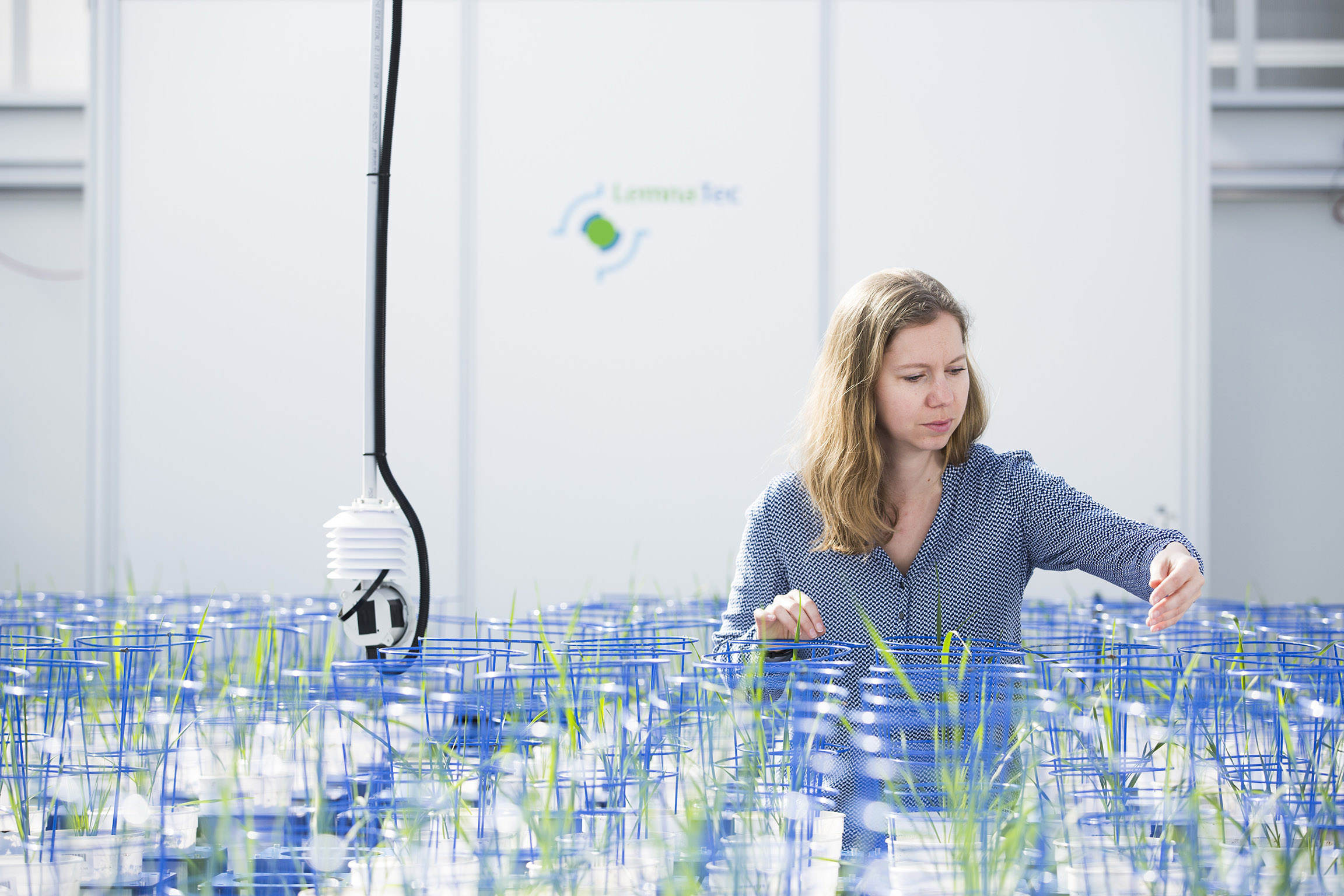100 years of better breeding

Sponsored by

Sponsored by

A lot can happen in a century, especially in the field of plant breeding. The team at the University of Adelaide reflects on progress of the past while looking toward a technologically advanced future.

When Professor Jason Able casts an eye back on history, he is humbled by the work of his predecessors.
“Plant breeding is an art and science,” says the distinguished plant breeder and Head of the University of Adelaide’s School of Agriculture, Food and Wine. “One hundred years ago, it was probably considered more of an art because it was very visual. That’s all you could go by because that’s all we understood at the time. Thinking back to 100 years ago, we didn’t even know what DNA was.”
Plant breeding underpins humankind’s survival. It allows us to grow plants for specific purposes, such as the production of food, fibre, timber and other products. In fact, we have staff like Jason to thank for some of the durum wheat present in San Remo pasta products, and barley varieties used to make beer for the likes of Coopers. Among staple crops that contribute to global food security, wheat and barley are particularly important in Australian agriculture.
“For example, our breeding activities during the period of 2002 to 2016 contributed to 17 cereal varieties being commercially released that have been, and still are being, grown by farmers,” Jason says. “Just between 2011-2016, the total value of grain produced from those 17 varieties alone was approximately $4.6 billion.”
When Jason considers the history of plant breeding, though, he casts back beyond the last century. “Plant domestication happened around 12,000 years ago, well before Egyptian times. Back then, they were probably subconsciously selecting for better looking plant varieties that grew well,” he says. Next, he references the ‘Father of genetics’, Gregor Johann Mendel, who came up with a set of laws of inheritance in 1865.
Mendel was a German-Czech biologist and meteorologist who tracked the segregation of parental genes and their appearance in the offspring as dominant or recessive traits using pea plants. He paved the way to our understanding of genes coming in pairs and being inherited as distinct units, one from each parent.
“Through Mendel’s foundation in the laws of inheritance, we began to understand that we have contributions from two parents that then get passed on to the progeny – just like us, as human beings,” Jason says. “That knowledge informed modern-day plant breeding.”
Then came the discovery of DNA in 1953 and the subsequent Green Revolution of the 1950s and ’60s, spearheaded by the likes of American agronomist Norman Borlaug. This paved the way for assigning a genotype to a phenotype and mutation breeding using chemicals or radiation, resulting in significant yield improvements.

“Suddenly, we were able to start thinking about understanding the genetic makeup within one variety versus another variety – what makes one variety better compared to another,” Jason says.
The fourth foundational pillar was the design of molecular plant-breeding technologies. This includes marker-assisted selection, transgenic plants (which first occurred in 1983), genome editing, sequencing of whole genomes, and the ability to regenerate and clone new plants in vitro.
“Those landmark milestones were really challenging at the time, but now they seem easy,” Jason says. “In the last 20-odd years, we have developed the technology to sequence whole genomes within a matter of weeks, for some of the smaller plant genomes. So now research scientists in this area could theoretically pump out genome sequences monthly. It is amazingly cost-effective too, compared to when the technology was first developed.”
These are the technologies that are now carrying plant breeding into the future. Associate Professor Bettina Berger, Scientific Director of the Plant Accelerator , part of the University of Adelaide’s Australian Plant Phenomics Facility , works in plant phenotyping, which is “pretty much measuring the characteristics of plants,” she says.
“That can be done using very traditional methods – with a ruler, or just by visual scoring – but it can also be done using cameras, sensors, automation and even robots,” Bettina explains. Whether you collect very simple measurements or high-dimensional sensor data, they carry important implications.
“If you want to assess whether a particular genetic combination is beneficial, you still need to phenotype the plants to know whether they will be more disease tolerant or whether they will be better adapted to compacted soils or saline soils, and whether they will be high yielding and so on,” Bettina says.
While genotyping has become fast and relatively cheap, Bettina says phenotyping is still very expensive. “What we’re trying to do is come up with methods that are either faster or cheaper or more precise than current methods,” she says.
The German-born Bettina came to the Waite with an academic history as a “gene jockey”, she says, working only “with a particular gene”. But she knew she wanted more from her career. She called the supervisor from her Masters project at Cambridge, Professor Mark Tester, who had since moved to Waite. “I asked whether he had something different for me, and he was planning the Australian Plant Phenomics Facility at the time,” Bettina says.
She originally came to the campus on a Humboldt Research Fellowship in 2008, but at the opening of the Plant Accelerator, in 2010, she says she “moved in with the furniture”. At the Plant Accelerator, Bettina has witnessed technological advances progress in leaps and bounds. “We primarily started with just greenhouse-based phenotyping. Now, field phenotyping is becoming more and more important and feasible,” she says.

Drones allow the team to collect data quickly from above, and ground-based vehicles capture closer images at high resolution. “The camera resolution has improved massively. Cameras like hyperspectral cameras used to be prohibitively expensive, but they are becoming something that, as a national facility, we can offer to our users,” Bettina says.
Accessible x-ray scanners have also changed the game. “In the past, researchers wanting to use x-ray technology mostly had to go to hospitals or medical facilities. We’ve now got one in our building to scan wheat and barley spikes and to look at roots,” she says.
Still, there are some elements of the job that remain the same – such as the interaction with plants and soil. “You still have to grow plants and you have to grow them well,” Bettina says. “The fanciest cameras and equipment aren’t going to make up for poorly grown plants or a trial that’s impacted by a severe heat or drought event.”
Looking into the next 100 years, Jason believes we’re heading towards an exciting future.
“Many of the low-hanging traits are easily bred for now, through the sophisticated breeding programs that are run publicly or privately,” he says. “What needs further research and development are those traits that are less visible and far more complex or controlled by multiple genes.”
The environment can have a profound impact on the performance of any one genotype. This equation of genetics and environmental interaction has always been challenging for breeders.
“By undertaking more fundamental research and development in areas that look at the interaction of many genes or proteins with the environment, we will eventually bridge this gap,” Jason says.
He believes advanced mathematical modelling, algorithm design, artificial intelligence, machine learning and complex decision frameworks will all become part of a breeder’s repertoire. Jason also predicts that more attention will be given to understanding plant stress memory and utilising that knowledge in plant breeding. Synthetic breeding by genome design could become a reality. “If de novo breeding eventuates, it would certainly create significant opportunity for plant breeding as we know it,” he says.
Above all, sector-wide communication is key.
“Being able to speak to a broad range of stakeholders – whether they be scientists, fellow breeders, primary producers, private agronomists, investment agencies, the general public, and government, for example – and the ability to package information that is easily digestible for all is important,” Jason says.“This ensures the economic, socio-cultural, legal, and ethical hurdles for any new variety that’s created is communicated, and communicated well.”
Story by Katie Spain
Photography by Randy Larcombe